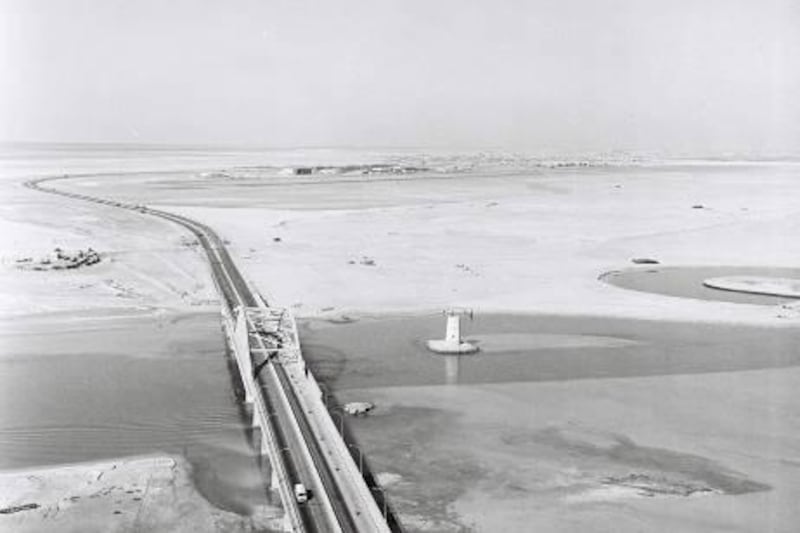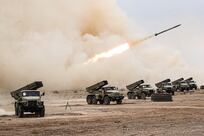Long before the influx of workers from Asia, Emirati and other Arab engineers designed and built one of the first roads with asphalt in the Emirates.
Al Seef Road in Bur Dubai was constructed in 1960, under the supervision of the Dubai Municipality.
Unlike its present-day four lanes, the road was narrow, and was shared by cars and donkeys alike.
About 11.6 kilometres in length, it ran along what were then Dubai's most strategic areas.
"It was an important road that was in frequent use, and that is why it was paved first," said Yousuf Sulaiman, the head of the municipality museum at the architectural heritage department of Dubai Municipality.
Snaking along the Khor of Dubai Creek, leading up to the Ruler's Court, it ends at the 1890 souq and traditional homes of Al Bastakiya.
The road, which preceded the Emirates' unification by 11 years, also leads to the oldest building in Dubai, Al Fahidi Fort, built in 1799. The fort was one of the ruling family of Dubai's former residences. It was renovated in 1970 as a national museum.
But where the road once connected docking dhows to the bustling marketplace of Bastakiya and beyond, it now brings traffic to commercial dhows that have been renovated into floating restaurants.
At about the same time that Dubai's first road was built, Sharjah's Al Arouba road was constructed. It ran through the heart of the emirate, near its old airport. The road was one of the projects backed by the Saudi King Faisal at the time.
The other road built in the early 1960s was "Al Wahda" street, which connected Sharjah to Dubai.
In the late 1960s, roads also became the first step in transforming the tide-swept island of Abu Dhabi into a capital city.
Construction on the capital's roads began with a 300 million Bahraini Dinar (Dh2.93 billion), five-year development plan in 1967. The first paving took place between 1968 and 1971.
In early 1966, the capital had about 30 vehicles: Land Rovers, the occasional Bedford truck and old Mercedes - usually taxis - that bumped along the city's gatch roads, roads that had been lightly overlaid with a local limestone material called gatch. The only air conditioning in cars was a handkerchief hung from the rear-view mirror, to be dried and reused. Salty air meant exhaust pipes lasted about six months.
At that time, the only paved road was inside the British Embassy.
"The roads made a lot of change," said Ghassan Merhebi, a civil engineer who came to Abu Dhabi in 1967, and who is the chairman of the Arabian Construction Company, one of the largest in the Middle East.
"At last you could open shops, people could come to you, whenever somebody was driving you didn't have dust all over you. Life quality improved with the paved roads. I got the first car after they were paved. I couldn't have a Toyota Crown until the roads were paved."
The first Abu Dhabi roads were built one metre above ground level so they would be level when the island was artificially filled to conquer rising tides.
Water was the greatest challenge: brackish water used for construction was piped from Al Ain, the roads had to be redone after the rains, and much of the island was submerged during high tide.
A Qatari company made the capital's first paved road where Al Maqta bridge now stands to the sea and Hamdan Street, which ran from Airport Road to Najda Road. Hamdan Street was home to the capital's first "skyscrapers" - three- to five-storey apartments rented to businessmen and government officials.
The laying of asphalt on the 6.5km long Corniche Road and the northern end of the island was completed by June 1970.
British police officers stationed at roundabouts monitored traffic in the 1960s. Traffic lights replaced roundabouts in the 1980s.
azacharias@thenational.ae
rghazal@thenational.ae
When Abu Dhabi had 30 cars
40 years of the UAE: Dubai and the Northern Emirates had the first roads in the UAE, before the country unified. Likewise, Abu Dhabi's first roads cleared the way for the rise of the capital.

Editor's picks
More from the national





